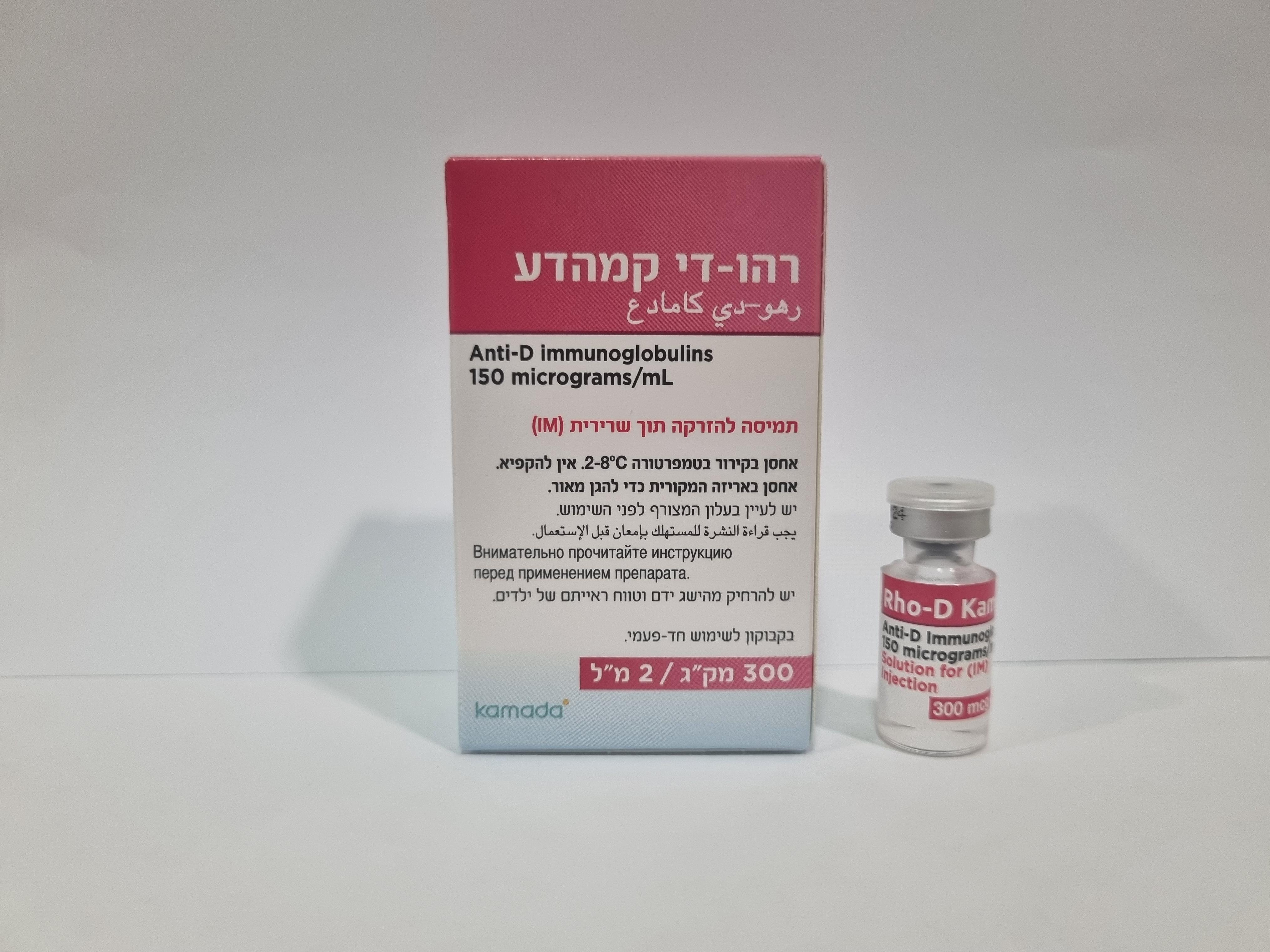Quest for the right Drug

רהו-די קמהדע RHO-D KAMADA (ANTI-D IMMUNOGLOBULINS)
תרופה במרשם
תרופה בסל
נרקוטיקה
ציטוטוקסיקה
צורת מתן:
תוך-שרירי : I.M
צורת מינון:
תמיסה להזרקה : SOLUTION FOR INJECTION
עלון לרופא
מינוניםPosology התוויות
Indications תופעות לוואי
Adverse reactions התוויות נגד
Contraindications אינטראקציות
Interactions מינון יתר
Overdose הריון/הנקה
Pregnancy & Lactation אוכלוסיות מיוחדות
Special populations תכונות פרמקולוגיות
Pharmacological properties מידע רוקחי
Pharmaceutical particulars אזהרת שימוש
Special Warning עלון לרופא
Physicians Leaflet
Posology : מינונים
4.2. Posology and method of administration Posology Rho-D Kamada must be administered intramuscularly only. Pregnancy A 1,500 IU (300 micrograms) dose of Rho-D Kamada should be administered at 28 weeks gestation. If Rho-D Kamada is administered early in the pregnancy, it is recommended that Rho-D Kamada be administered at 12-week intervals in order to maintain an adequate level of passively acquired anti- Rh. A 600 IU (120 micrograms) dose should be administered as soon as possible after delivery of a confirmed Rho (D) positive baby and normally no later than 72 hours after delivery. In the event that the Rh status of the baby is not known at 72 hours, Rho-D Kamada should be administered to the mother at 72 hours after delivery. If more than 72 hours have elapsed, Rho-D Kamada should not be withheld, but administered as soon as possible up to 28 days after delivery. Other Obstetric Conditions A 600 IU (120 micrograms) dose of Rho-D Kamada should be administered immediately after abortion, amniocentesis (after 34 weeks gestation) or any other manipulation late in pregnancy (after 34 weeks gestation) associated with increased risk of Rh isoimmunization. Administration should take place within 72 hours after the event. A 1,500 IU (300 micrograms) dose of Rho-D Kamada should be administered immediately after amniocentesis before 34 weeks gestation or after chorionic villus sampling. This dose should be repeated every 12 weeks while the woman is pregnant. In case of threatened abortion, Rho-D Kamada should be administered as soon as possible. Transfusion Rho-D Kamada should be administered within 72 hours after exposure to treatment of incompatible blood transfusions or massive fetal hemorrhage as outlined in the table below: Route of Dose and Frequency Rho-D Kamada Dosage Administration Rh+ Blood Rh + Red Cells Intramuscular 6,000 IU (1,200 60 IU (12 120 IU (24 micrograms) every micrograms)/ml micrograms)/ml 12 hours until total blood cells dose administered Injection Parenteral products such as Rho-D Kamada should be inspected for foreign particulate matter and coloration prior to administration. Method of Administration Intramuscular administration. Administer into the deltoid muscle of the upper arm or the anterolateral aspects of the upper thigh. Due to the risk of sciatic nerve injury, the gluteal region should not be used as a routine injection site. If the gluteal region is used, use only the upper, outer quadrant. Laboratory Test The intrapartum administration of Rho-D Kamada may result in a positive direct antiglobulin test in the baby after delivery. In rare cases, this may also put into question the true status of the infant's Rh blood type. Appropriate laboratory tests should be performed to resolve such problems. The presence of administered Rho-D Kamada in the maternal circulation may cause a positive indirect antiglobulin test. If there is uncertainty about mother's Rh group or immune status, Rho-D Kamada should be administered to the mother. The occurrence of a large fetomaternal hemorrhage late in pregnancy or at delivery may cause spurious mixed field agglutination reactions in a Rho (D) negative mother, and may result in her being mistyped as Rho (D) positive or Du. Such instances may indicate the need for a larger than normal dose of Rho-D Kamada.

שימוש לפי פנקס קופ''ח כללית 1994
Prevention of sensitization of an Rh-negative mother who delivers an Rh-positive child, or after abortion
תאריך הכללה מקורי בסל
01/01/1995
הגבלות
תרופה שאושרה לשימוש כללי בקופ'ח
מידע נוסף
